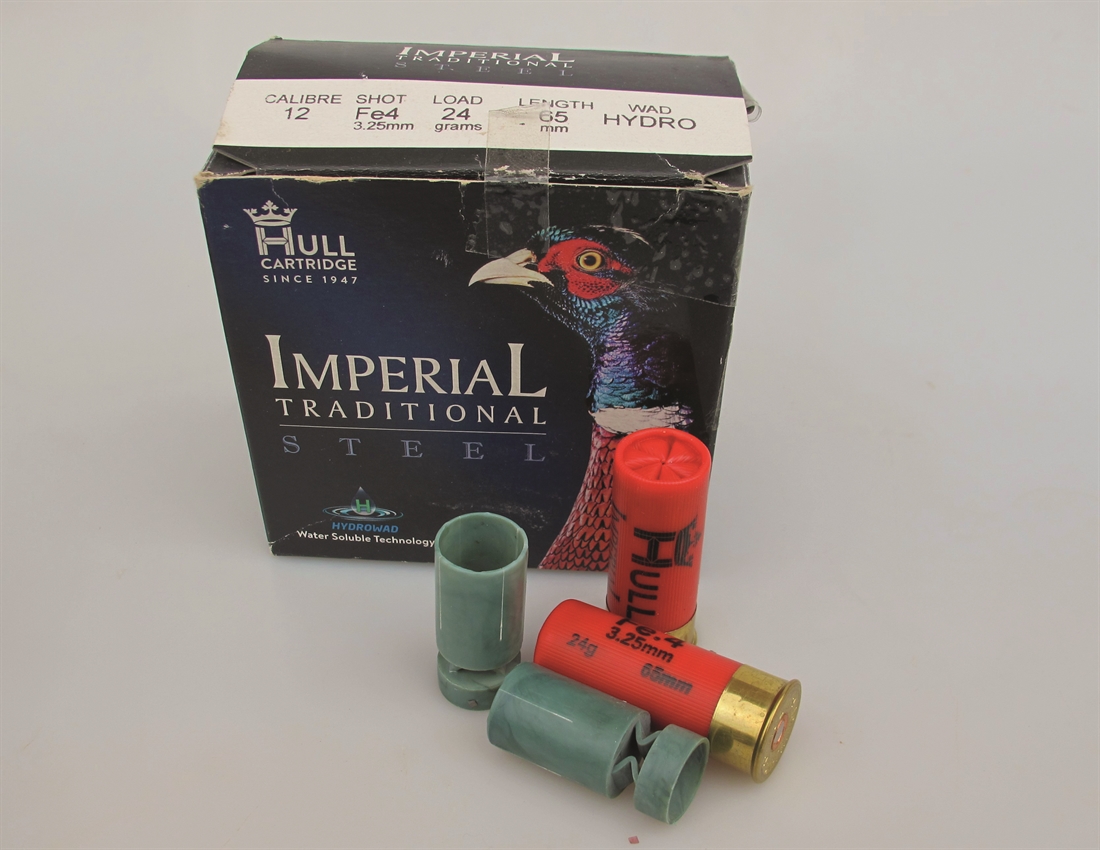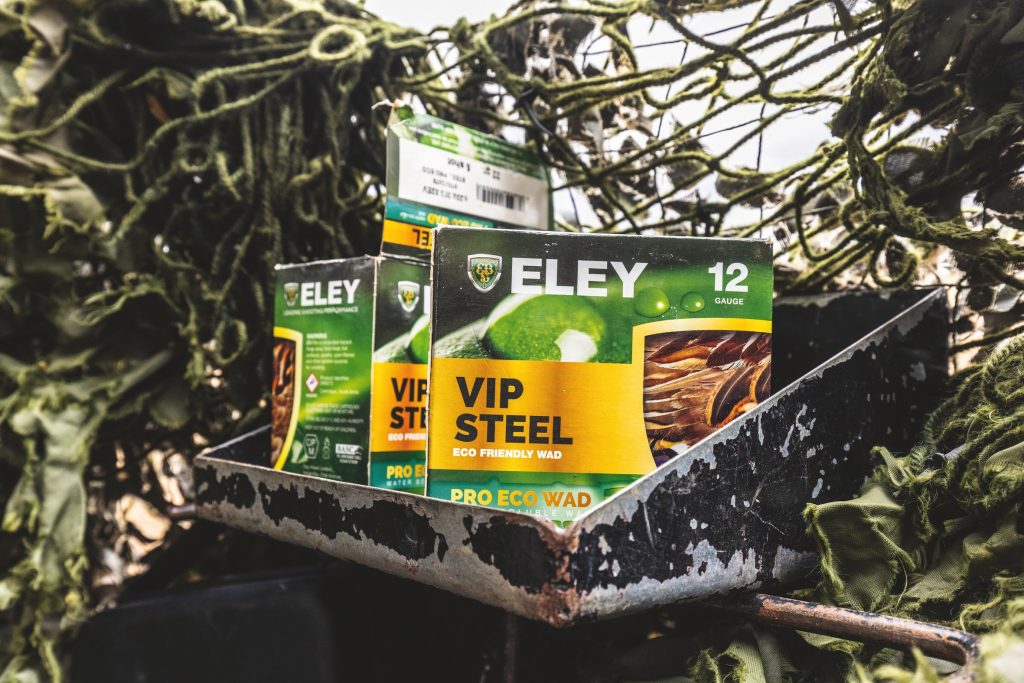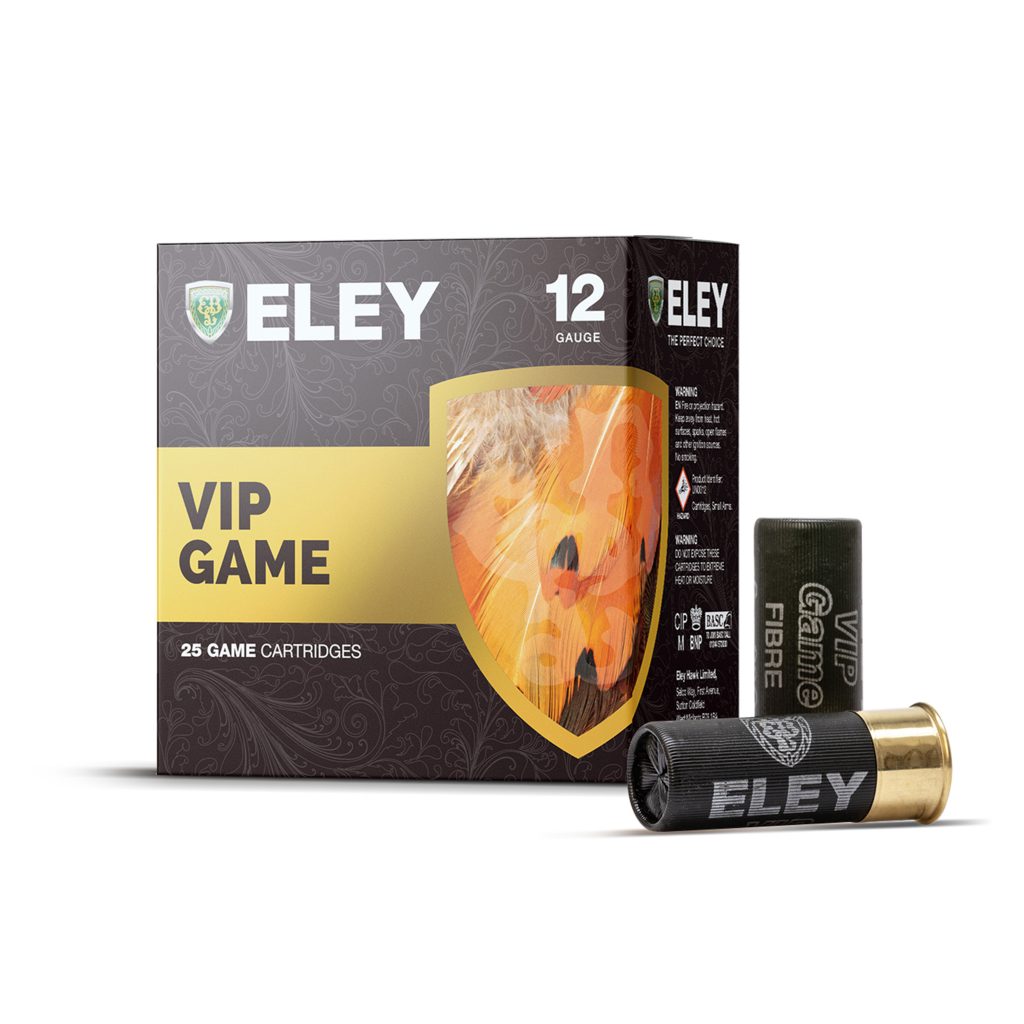Steel vs Lead
Richard Atkins considers some important differences in how steel and lead shot compare in performance

With the likely transition from lead to non-toxic shot for game and live quarry
shooting fast approaching – which for most of us means using steel shot – questions surrounding what steel shot can and cannot do continue to cause discussion and, possibly, some alarm.
Such a dramatic transition from a situation we have grown up with is bound to create considerable concern, speculation and, of course, some misunderstandings.
The greatest concerns among live quarry shooters – apart from the suitability of their guns for use with steel shot – is the efficacy of the cartridges they will use. Steel shot inevitably raises the question of whether it will kill quarry as cleanly, consistently, effectively and most of all humanely as lead shot. Questions arise as to how close to the performance of lead shot it can be. And it is a matter of ‘how close’, because steel shot has some key areas where it is clearly ballistically inferior to lead and few, if any where, it is superior – except for being nontoxic. With steel being a much less expensive material than lead, if it were ballistically superior, or even equivalent, to lead then we would be using it anyway.
KEY POINTS
• Lower specific gravity (7.8 compared with 11.3 for lead).
• Larger pellets required to achieve required energy.
• Much harder and less deformable, requiring full protective wad.
• Much bulkier than equivalent shot weight in lead, limiting case capacity.
• CIP specifications limiting velocity, momentum and shot size.
• Much reduced choice of shot load weights, sizes and calibres.
• Lack of performance data as to how steel shot performs ballistically and effectively.
ISSUES RAISED FROM POINTS ABOVE
Lower specific gravity
Larger pellet size required to achieve adequate pellet energy.
CIP velocity limits (425m/s for standard steel and 430m/s for high performance steel 12-gauge cartridges) limit the scope for increased pellet energy to be achieved through higher velocity cartridges.
Larger pellet considerations
Larger pellets take up more cartridge case space due to larger spaces between each touching pellet than with smaller shot. This reduces the maximum shot load weight possible per cartridge gauge/case length.
Larger pellets raise the risk of momentum damage to barrels and chokes. This is why standard steel specifications limit the velocity and shot size for use in guns made prior to the introduction of steel shot proof.
Larger pellets have increased air resistance, so slow down more rapidly.
Fewer pellets per load affects pattern pellet density and may require a heavier shot load, increasing recoil.
Increased frontal area requires more energy to penetrate quarry than smaller diameter shot.
Hardness
Choke restrictions apply (maximum half choke for HP cartridges) due to potential barrel/choke damage with larger steel shot.
Shot hardness requires a very strong, full shot cup protective wad to prevent barrel contact damage.
Heavy construction bio-polymer wads can further reduce available case capacity, compared with fibre wads used in lead shot loads. Further, the bio-polymers now required for game cartridge wads are less physically strong than HDPE plastics and may require added thickness to prevent pellet abrasion/push through during the high-speed journey along the barrel.
Steel shot doesn’t deform when striking quarry. It was established long ago that
a factor in ‘lethality’ involves lead shot deforming on impact and giving up all the pellet energy within the quarry. Cartridge companies put in their promotional information that their game cartridges contained 2% or 3% antimony specifically so that the shock effect is retained.
Steel shot with sufficient energy can over- penetrate and pass through quarry. If no vital organs are struck, what does that mean for efficacy and respect for quarry?
Steel is bulkier
Bulky steel pellets take up more space, which requires a shot cup with greater capacity than a lead equivalent. This has resulted in the return of the rolled turnover (RTO) closure with some cartridges. Others are loading 32g of steel No. 4 shot into 3″ cartridge cases to permit a crimp closure to be used.
The larger shot cup means less space for a collapsible centre section to the wad to enable the load to fit into existing standard case sizes. In some shorter cases the bio wads have virtually no centre section between the shot cup and cup.
Having no cushioning centre section can lead to the shooter feeling increased recoil, just as some find the same cartridges in fibre wads kick than a conventional plastic wad cartridge. With steel shot velocities higher than are usual with lead game cartridges (within CIP limits) the momentum of similar shot weight cartridges will be higher. This will be more noticeable with lighter-weight game guns and can affect the shooter’s performance and enjoyment. Recoil could become another factor in this transition.
CIP limits
CIP specifications for steel shot cartridges limit what is possible.
Failure to adhere to CIP limits can result in ammunition having to be recalled, which is expensive and embarrassing for the manufacturer.
Shotgun cartridges typically vary in velocity more than rimfire or centrefire cartridges. This results in steel shot ammunition being manufactured with a safety margin below the CIP permitted level to ensure that no batch inadvertently exceeds the limits.
Because of this necessary caution, the steel shot cartridges we buy will seldom reach the permitted 425m/s and 430m/s velocity in 12-gauge steel loads.
As BASC published in their booklet on steel shot some time ago, representation has been made to the CIP with the aim of obtaining a rise in the current CIP velocity and momentum limits. There has so far been no indication of this happening.
The fact the request was made makes it seems logical that there must have been some genuine thought that such an increase would be useful. It will be interesting to discover more about the reasons behind the request and the CIP response.
Reduced choice
An internet search for all the currently available steel shot with bio wad cartridge options will quickly reveal that, compared with lead shot game cartridges, there is very little choice. As an example, an Eley list of 12-gauge 65mm game cartridges from 2020 shows 17 options (plus three paper- case options), some with up to three shot size options and two shot weights and wad options, making around 50 cartridges. Now there is only the Grand Prix Traditional Steel Pro Eco wad 30g No. 4 listed.
The CIP shot size limit of 3.25 diameter for standard steel cartridges, being slightly smaller than UK No. 4 and identified by some cartridge makes as Fe4 to differentiate, is nominally two sizes up from No. 6 and therefore likely to prove the most popular size for 2½” chambered lightweight game guns. Lyalvale Express does offer a No. 5 steel shot in their Earthwad Ultimate Steel 30g 65mm cartridge.
Even with HP steel shot cartridges, choices are limited at this time. It is likely that more options will come along but will never reach anywhere near the choices we have been used to for all the reasons listed above. Extra bulk due to lower specific gravity and its knock-on effects is a large factor.
Smaller gauges will be particularly hard hit and face very limited steel shot options, The smaller gauges, particularly below 20 gauge, just do not have adequate case capacity for the bulky steel shot and required full cup wad to enable a suitable amount of sufficiently large steel pellets to be effective at the desired sporting range.
Lack of reliable data
One of the greatest disappointments for me is the lack of well researched and reliable data to assist in making informed decisions as to the likely performance of various cartridges. We do not even have basic figures for the velocity loss of various steel shot sizes over a range of distances, particularly over the most useful sporting distances.
We know heavier shot carries its energy further than smaller shot, but how well does larger steel shot retain its energy over distance, given the greater air resistance acting on larger pellets? Perhaps tests have been done but the data is not widely available. If so, it is to be hoped it is not being withheld due to poor results. Retained energy is one thing, but how much extra energy is required to adequately penetrate a pheasant at 50yd?
My own penetration tests using pizza boxes gave some interesting if rudimentary results. Hull High Pheasant No. 5 Extreme gave the highest figure of those tested, with 23 sheets (both sides of 11 boxes plus one of box 12) penetrated with nine of 17 pellets at 50yd. Eley Zenith No. 6 copper plated penetrated and exited nine boxes plus one side of the ninth box for 17 sheets penetrated. High Pheasant steel shot Fe4 penetrated and exited seven boxes, but only three pellets entered the eighth and did not exit, giving 14 sheets penetrated.
Shooting at cards like this was the standard method for testing pellet penetration many years ago – long before high tech laboratory equipment became available – and gives a useful if not scientific comparison. Perhaps this article will encourage those who may have data to be more forthcoming. I truly hope so.
IN SUMMARY
The coming of steel shot for game shooting clearly presents numerous issues. However, the ballistic limitations of steel shot do not mean it is unusable in the field. Some pigeon shooters have used steel shot for years, although not with biodegradable wads. What is required is a realistic analysis of what is possible. This will likely entail accepting a reduction in effective range compared with premium lead game cartridges.
My tests with steel shot cartridges loaded with biodegradable wads has shown that the often quoted “steel shot shoots full choke patterns from half choke guns” cannot be accepted as accurate for all guns, types of chokes or cartridges. My pattern tests showed that more cartridges and chokes did not reached full-choke patterns than did.
Only testing your own equipment will tell you how it actually performs.
While we are waiting for some meaningful data from reliable official sources, Sporting Gun will continue to bring you test results for the latest game cartridges as they become commercially available.






